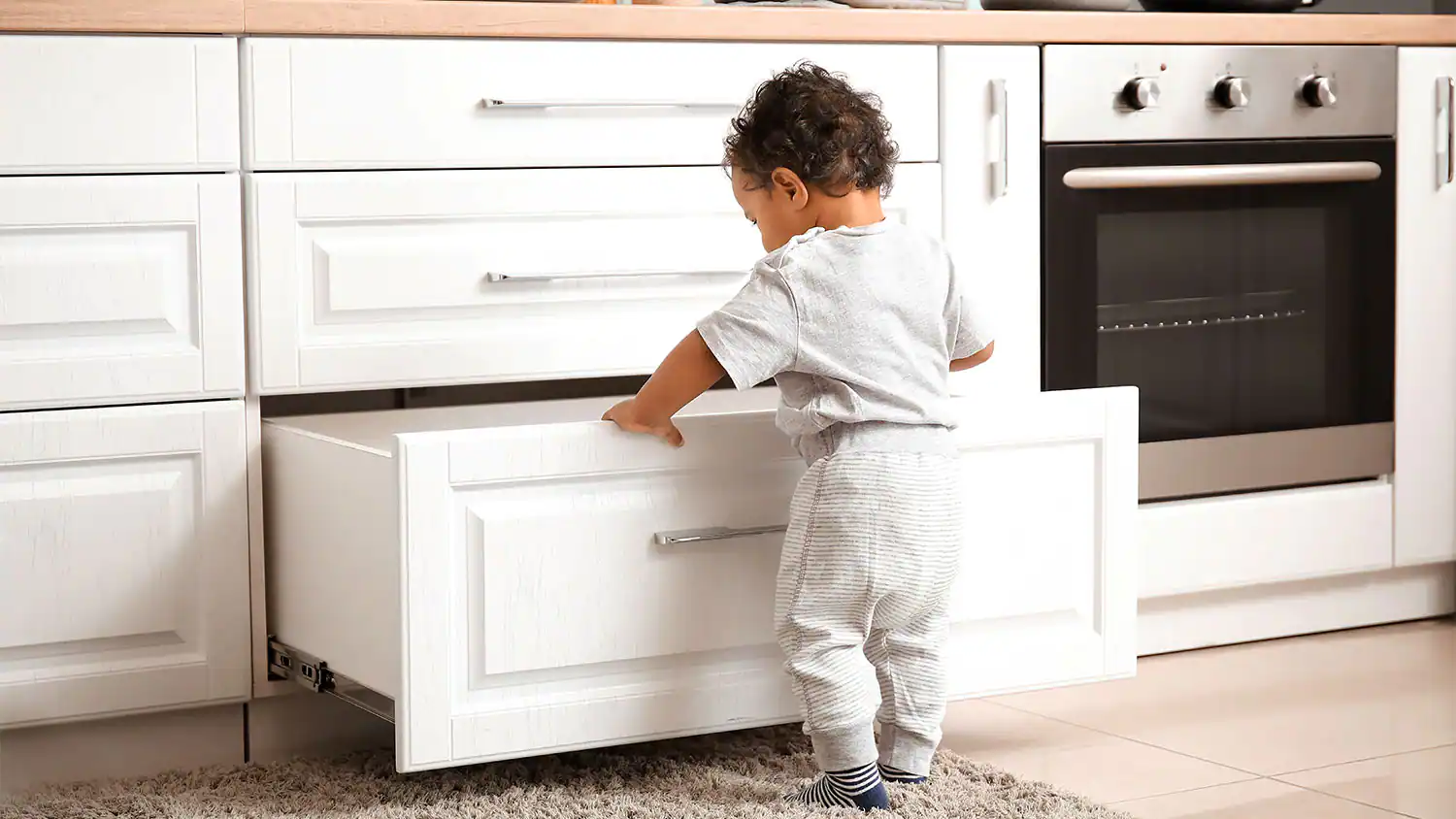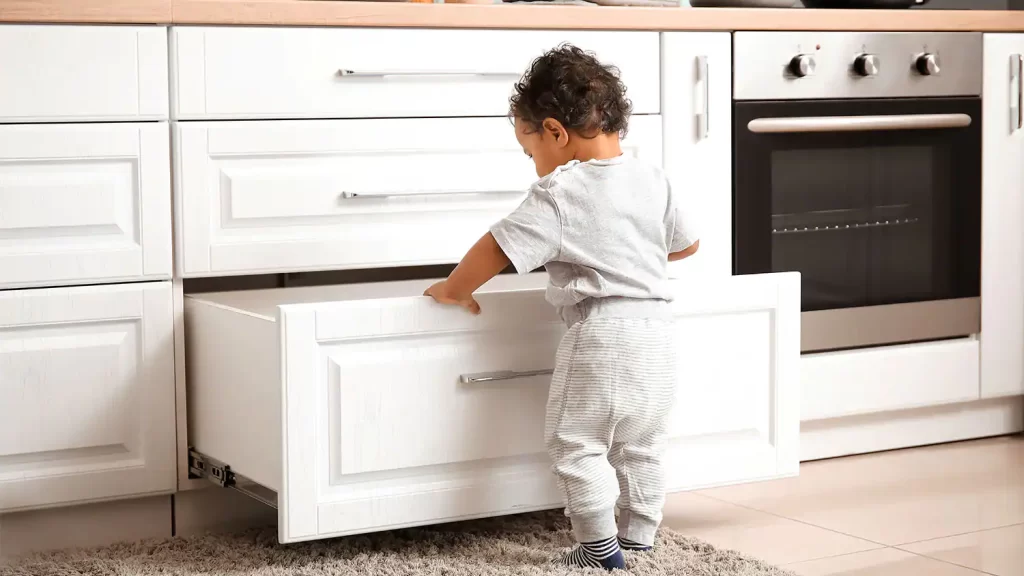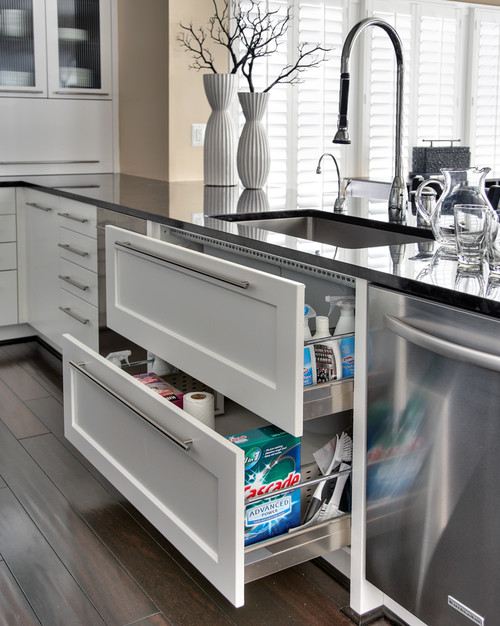

How To Make Wood Drawers Slide Easier
Is there anything more frustrating than a stubborn, stuck wooden drawer? Don’t let this common problem slow you down in your daily routine. In this blog post, we will explore the secrets of “How To Make Wood Drawers Slide Easier.” With a few simple adjustments and tips, you can have your drawers gliding smoothly in no time. Keep reading to learn how you can say goodbye to the annoyance of sticky drawers and hello to efficiency and ease.
Reasons for Stuck Drawers
| Problem | Cause | Solution |
|---|---|---|
| 1. Dirty or Grimy Drawer Slides and Tracks | Accumulated dust, dirt, or debris in the tracks and slides | Remove the drawers and thoroughly clean the slides and tracks with a soft cloth and mild detergent. Dry the surfaces before reassembling the drawer. |
| 2. Misaligned Drawers | Loose or improperly installed hardware, warped drawer components | Check for loose screws or brackets and tighten as needed. Adjust or replace hardware to ensure proper alignment. |
| 3. Swollen Wood | Exposure to moisture or humidity changes | Use a dehumidifier or air conditioner to control the room’s humidity level. Sand down swollen surfaces and apply a wood finish or wax to seal and protect the wood. |
| 4. Rough or Damaged Surfaces | Wear and tear, improper finishing | Sand the rough surfaces with fine-grit sandpaper and apply a suitable wood finish or wax to protect and smooth the surfaces. |
| 5. Damaged or Worn-out Hardware | Prolonged use, corrosion, or inferior quality components | Inspect and replace any damaged or worn-out hardware, such as slides, glides, or rollers, with compatible and high-quality components. |
| 6. Insufficient or Inappropriate Lubrication | Lack of lubrication or use of oil-based lubricants | Apply a suitable lubricant, such as silicone spray or paraffin wax, to the drawer slides, tracks, and glides. Avoid using oil-based lubricants. |
| 7. Overloaded Drawers | Excessive weight in the drawers | Remove excess items from the drawers to reduce the load. Consider using drawer organizers or additional storage solutions to declutter and distribute the weight. |
By identifying the specific problem causing your drawers to become stuck, you can apply the appropriate solution from this chart. Regular maintenance and care will help ensure your wood drawers remain functional and smooth for years to come.
Lubricants That Help Drawers Slide More Easily
Choosing the right lubricant can significantly impact the smoothness and longevity of your wood drawers. The primary purpose of a lubricant is to reduce friction between the drawer slides, tracks, and glides, ensuring ease of use and preventing wear and tear. In this section, we will discuss various lubricants that can help your drawers slide more easily, detailing their advantages and potential drawbacks.
- Silicone Spray
Silicone spray is a popular choice for lubricating wood drawers due to its excellent water displacement properties, temperature resistance, and non-staining characteristics. It provides a thin, durable coating that dries quickly, reducing friction without attracting dust and debris. Apply silicone spray sparingly to the drawer slides, tracks, and glides, and wipe away any excess with a clean cloth.
Pros:
- Dries quickly
- Non-staining
- Does not attract dust and debris
- Resistant to temperature fluctuations
Cons:
- Requires occasional reapplication
- May require ventilation during application due to fumes
- Paraffin Wax
Paraffin wax, also known as candle wax, is a versatile and readily available lubricant suitable for wood drawers. Simply rub a block of paraffin wax along the drawer slides, tracks, and glides, ensuring even coverage. The wax creates a low-friction barrier that helps the drawer glide smoothly without attracting dirt or grime.
Pros:
- Easy to apply
- Does not attract dirt or grime
- Long-lasting
Cons:
- Can be difficult to remove if excessive amounts are applied
- May leave a waxy residue
- Graphite Powder
Graphite powder is a dry lubricant composed of finely ground graphite particles. It works well on wood drawers due to its low friction properties and resistance to moisture. Apply a small amount of graphite powder to the drawer slides, tracks, and glides using a soft brush or applicator. Take care not to use too much, as excessive amounts can create a messy residue.
Pros:
- Dry lubricant, does not attract dirt or dust
- Resistant to moisture
- Effective at reducing friction
Cons:
- Can be messy if over-applied
- May stain wood surfaces
- Teflon (PTFE) Spray
Teflon spray, containing polytetrafluoroethylene (PTFE), is a synthetic lubricant known for its low friction and non-stick properties. When applied to wood drawer components, it forms a thin, dry film that reduces friction and repels moisture. Spray a light coating onto the drawer slides, tracks, and glides, and allow it to dry completely before reassembling the drawer.
Pros:
- Low friction
- Moisture-resistant
- Dries quickly
Cons:
- May require occasional reapplication
- Can be more expensive than other options
Conclusion
Selecting the appropriate lubricant for your wood drawers can greatly improve their functionality and prolong their lifespan. Consider factors such as ease of application, resistance to dust and debris, and compatibility with your specific drawer system when making your choice. Regularly inspect and lubricate your drawers as needed to maintain smooth, easy operation for years to come.
How to Remove a Drawer
Whether you need to clean, repair, or lubricate your drawers, removing them is often the first step. Wood drawers can be constructed using various mechanisms, such as ball-bearing slides, wooden runners, or undermount slides. In this section, we will provide a detailed guide on how to remove a drawer and outline the equipment, tools, and materials you might need.
Step 1: Empty the Drawer
Before removing a drawer, ensure that it is empty to avoid damage to the contents or additional stress on the drawer components. Clear out all items and set them aside in a safe location.
Step 2: Identify the Drawer Mechanism
Examine the drawer and its mechanism to determine which method to use for removal. Common mechanisms include ball-bearing slides, wooden runners, and undermount slides. Each type may require a slightly different removal approach.
Step 3: Remove the Drawer
Ball-bearing slides:
- Pull the drawer out as far as it will go.
- Locate the release levers, clips, or buttons on each slide.
- Press the release mechanism (one side may require pushing up, while the other requires pushing down).
- While holding the release mechanism, gently pull the drawer out and away from the cabinet or dresser.
Wooden runners:
- Pull the drawer out as far as it will go.
- Lift the front of the drawer slightly while pulling it outwards.
- Continue to pull the drawer out while maintaining the upward angle until it is completely removed.
Undermount slides:
- Pull the drawer out as far as it will go.
- Locate the release levers or clips on the underside of the drawer, towards the front.
- Press or lift the release mechanism, depending on the slide model.
- While holding the release mechanism, gently pull the drawer out and away from the cabinet or dresser.
What You’ll Need: Equipment / Tools & Materials
| Equipment / Tools | Purpose |
|---|---|
| Soft cloth | To clean the drawer components and wipe down surfaces after lubrication |
| Screwdriver | To tighten or remove screws and hardware |
| Fine-grit sandpaper (150-220 grit) | To smooth rough surfaces on the drawer and track |
| Tack cloth | To remove dust and debris after sanding |
| Soft brush or applicator | To apply graphite powder, if using as a lubricant |
| Materials | Purpose |
|---|---|
| Mild detergent | To clean the drawer components |
| Wood finish or wax | To seal and protect sanded surfaces |
| Lubricant (silicone spray, paraffin wax, graphite powder, or Teflon spray) | To reduce friction and improve drawer movement |
By following these steps, you can successfully remove a drawer for cleaning, maintenance, or repair. Remember to identify the type of drawer mechanism and use the appropriate removal method to avoid damaging your drawer components. Keep the necessary equipment, tools, and materials on hand to ensure a smooth and efficient process.

How to Make Wood Drawers Slide Easier
Wood drawers are a staple in many households, known for their durability and timeless charm. However, they can become difficult to slide over time due to wear, misalignment, or other factors. In this article, we will guide you through the process of making your wood drawers slide easier, ensuring smooth functionality and long-lasting performance.
Step 1: Inspect and Clean the Drawers
The first step in making your wood drawers slide easier is to inspect and clean them. Remove the drawers from the cabinet or dresser and examine the condition of the drawer slides, tracks, and glides. Pay close attention to any dirt, grime, or debris that may have accumulated over time, as this can contribute to friction and impede smooth movement. Use a soft cloth or sponge and mild detergent to clean the surfaces, then let them dry completely.
Step 2: Repair and Adjust the Hardware
If your drawers are misaligned or have damaged hardware, it’s essential to address these issues before proceeding. Check for loose screws or brackets and tighten them as needed. Replace any damaged or worn-out hardware, such as slides, glides, or rollers, with new components that are compatible with your drawer system.
Step 3: Sand and Refinish the Surfaces
One common cause of wood drawers sticking is the wood itself. Over time, wood surfaces can become rough, warped, or swollen due to changes in humidity or wear. To alleviate this issue, sand down the drawer sides and tracks with fine-grit sandpaper (150 to 220 grit). Be sure to sand in the direction of the wood grain and avoid removing too much material, as this can weaken the drawer structure.
After sanding, wipe down the surfaces with a tack cloth to remove any remaining dust. Apply a thin layer of wood finish or wax, such as paste wax or a clear polyurethane, to seal and protect the wood. Allow the finish to dry according to the manufacturer’s instructions before reassembling the drawers.
Step 4: Lubricate the Slides and Tracks
Proper lubrication is crucial for smooth drawer operation. Apply a thin layer of lubricant, such as silicone spray, paraffin wax, or specialized drawer slide lubricant, to the drawer slides, tracks, and glides. Avoid using oil-based lubricants, as these can attract dust and grime, leading to further sticking issues.
Step 5: Reassemble and Test the Drawers
After the lubrication is complete, reassemble the drawers and test their movement. Slide the drawers in and out to ensure they glide smoothly and without resistance. If you still encounter issues, re-check the alignment and hardware, making any necessary adjustments.
Step 6: Maintain Your Drawers
To keep your wood drawers sliding easily, regular maintenance is essential. Periodically inspect the drawer hardware for signs of wear, loose components, or misalignment. Clean and lubricate the slides and tracks as needed, and consider applying a fresh coat of wood finish or wax to protect the surfaces from moisture and wear.


